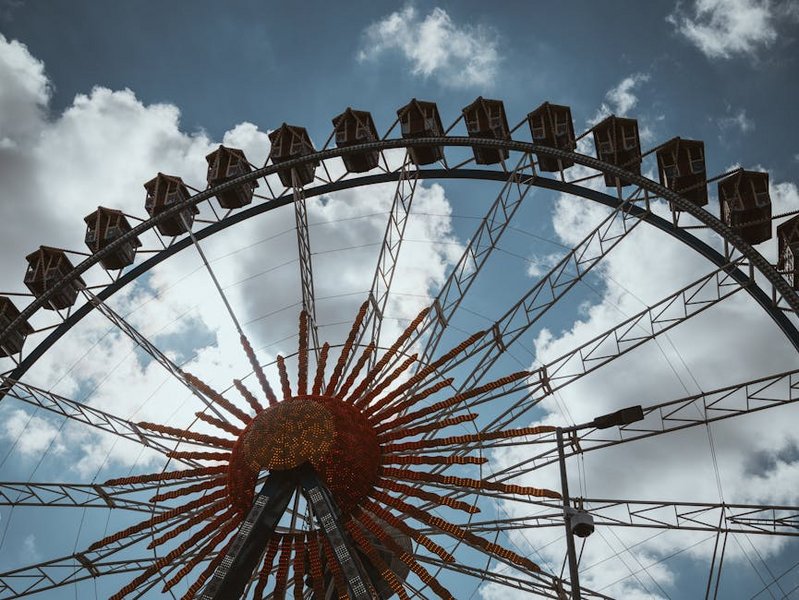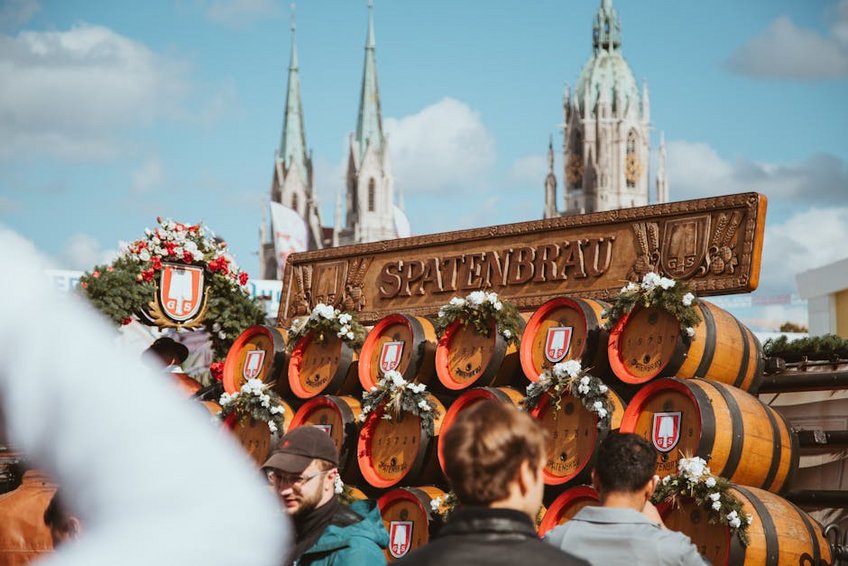Munich Oktoberfest: The Ultimate Guide to the World’s Largest Volksfest
Experiencing Munich Oktoberfest is like stepping into the heart of Bavarian culture, where centuries-old traditions meet modern-day celebration in the most spectacular fashion. As the world’s largest Volksfest (people’s festival), this 16- to 18-day extravaganza attracts over six million visitors annually who come to savor authentic German beer, indulge in traditional foods, and participate in cultural festivities that date back to 1810. Whether you’re a first-time attendee or a seasoned Oktoberfest veteran, planning your visit requires understanding the festival’s unique rhythm, from securing accommodation months in advance to mastering the art of tent reservations. The Munich Oktoberfest transforms Theresienwiese park into a vibrant temporary city featuring 14 massive beer tents, countless amusement rides, and cultural displays that celebrate Bavarian heritage. You’ll discover that this isn’t just a beer festival—it’s a cultural immersion that offers something for everyone, from families with children to groups of friends seeking authentic German hospitality.
Munich Oktoberfest Essential Information – What Every Visitor Needs to Know
Understanding the fundamentals of Munich Oktoberfest will significantly enhance your experience and help you navigate the festival like a pro. The event typically runs from mid-September through the first weekend in October, precisely 16 days before the first Sunday in October, with specific opening and closing ceremonies that follow traditional protocols. Only six Munich breweries are permitted to serve beer at the festival: Augustiner, Hacker-Pschorr, Hofbräu, Löwenbräu, Paulaner, and Spaten, each operating their own distinctive tents with unique atmospheres and specialty brews. The festival grounds span 420,000 square meters (about 103 acres) and feature not just beer tents but also roller coasters, Ferris wheels, traditional craft markets, and cultural exhibits. You’ll want to familiarize yourself with the festival layout, tent characteristics, and daily schedules to make the most of your Munich Oktoberfest adventure.
Historical Background and Cultural Significance
- Originated from the October 12, 1810 wedding celebration of Crown Prince Ludwig (later King Ludwig I) and Princess Therese of Saxe-Hildburghausen, whose name the festival grounds (Theresienwiese) honor
- Traditional costume parade (Trachten- und Schützenzug) occurs on the first Sunday, featuring over 8,000 participants in historical costumes marching through Munich’s city center
- The festival was canceled 26 times throughout history due to wars, cholera epidemics, and other crises, making its continuous modern run since 1946 particularly significant
- Budget traveler: $80-120 per day covering hostel accommodation, public transportation, festival food, and 2-3 beers (reservation-free seating areas)
- Mid-range experience: $150-250 per day including hotel accommodation, traditional clothing rental, reserved seating, full meals, and unlimited transportation
- Luxury experience: $300-500+ per day featuring premium hotel, purchased traditional clothing, reserved table in premium tents, guided tours, and fine dining
- Official Munich Oktoberfest Website
- Munich Official Tourism Portal
Official Dates and Operating Hours
The Munich Oktoberfest follows a precise schedule that balances traditional ceremonies with public accessibility. The festival opens at 10:00 AM on the first Saturday with the traditional barrel tapping ceremony by Munich’s mayor, who declares “O’zapft is!” (It’s tapped!) to officially commence festivities. Weekday hours typically run from 10:00 AM to 10:30 PM, while weekends extend from 9:00 AM to 10:30 PM, with beer service ending at 10:30 PM sharp. Tents stop admitting new guests once they reach capacity, which often happens by early afternoon on weekends, so planning your arrival time is crucial. The final day traditionally features a fireworks display at 10:00 PM over the Theresienwiese, providing a spectacular conclusion to the festival.

Munich Oktoberfest Planning Your Trip – Timing, Budget, and Preparation
Strategic planning separates overwhelmed visitors from those who fully enjoy Munich Oktoberfest without stress or unexpected expenses. You should begin planning at least six months in advance, especially if traveling during peak weekends, as accommodation within reasonable distance of the festival grounds sells out quickly and prices increase dramatically as the event approaches. Your budget should account for not just beer and food but also transportation, accommodation, traditional clothing if desired, souvenirs, and amusement ride tickets. Consider purchasing a CityTourCard Munich for unlimited public transportation access, as parking near the festival is extremely limited and expensive. Remember that the Munich Oktoberfest experience extends beyond the festival grounds to include exploring Munich’s beautiful historic center, museums, and surrounding Bavarian countryside.
Best Time to Visit Munich Oktoberfest
Choosing when to experience Munich Oktoberfest depends largely on your tolerance for crowds and your desired atmosphere. Weekdays generally offer a more relaxed experience with slightly shorter lines and better chances of finding seating without reservations, particularly during the first week. The opening weekend attracts the most international visitors and party atmosphere, while the final weekend features more local families and traditional celebrations. Mid-week afternoons typically see fewer crowds, especially between 1:00 PM and 4:00 PM when many visitors are taking breaks. For ideal weather conditions, late September usually offers pleasant autumn temperatures around 15-20°C (59-68°F) with comfortable evenings for outdoor enjoyment.
Budget Planning and Costs for Munich Oktoberfest
Essential Preparation Checklist for Munich Oktoberfest
Proper preparation ensures you can fully enjoy Munich Oktoberfest without unnecessary stress or discomfort. Reserve accommodation at least six months in advance, especially if visiting during opening or closing weekends when hotels near the city center reach 95% occupancy rates. Pack comfortable walking shoes as you’ll be on your feet for hours, and consider bringing a refillable water bottle to stay hydrated between beer servings. Learn basic German phrases like “Prost” (cheers), “Ein Mass, bitte” (one liter, please), and “Danke” (thank you) to enhance your cultural experience. Download the official Munich Oktoberfest app for real-time updates on tent availability, event schedules, and public transportation information.
Munich Oktoberfest Top Attractions and Activities – Beyond the Beer Tents
While beer is undoubtedly the star attraction, Munich Oktoberfest offers diverse experiences that cater to all interests and age groups. The festival grounds feature over 200 attractions including traditional amusement rides, games of skill, cultural exhibits, and culinary demonstrations that showcase Bavarian traditions beyond brewing. Families particularly enjoy the earlier hours (before 6:00 PM) when the atmosphere is more relaxed and children can experience the festival’s gentler side with age-appropriate rides and activities. Cultural enthusiasts shouldn’t miss the traditional costume parade on the first Sunday, where over 8,000 participants march in historical costumes from Maximilianstraße through the city center to the festival grounds. Even if you’re not a beer drinker, the Munich Oktoberfest offers plenty to enjoy, from traditional Bavarian music performances to artisan craft demonstrations and regional culinary specialties.
Must-See Highlights at Munich Oktoberfest
Certain experiences define the Munich Oktoberfest adventure and shouldn’t be missed regardless of your interests or travel style. The opening ceremony on the first Saturday features the traditional barrel tapping by Munich’s mayor and the subsequent parade of brewery horses and decorated carriages through the city streets. Each major beer tent offers a unique atmosphere—from the family-friendly Augustiner-Festhalle to the internationally famous Hofbräu Festzelt—and visiting several provides a more complete festival experience. The Krinoline, a nostalgic carousel dating back to 1924, offers beautiful views of the festival grounds from its elevated platform and represents one of the oldest operating amusement rides at the event. Traditional Bavarian music performances occur throughout the day in every major tent, with scheduled shows featuring brass bands, yodelers, and folk dancers that celebrate regional cultural heritage.
Hidden Gems and Local Favorites at Munich Oktoberfest
Beyond the major tents and obvious attractions, Munich Oktoberfest contains delightful surprises that many visitors overlook in their beer-focused itineraries. The Weinzelt (Wine Tent) offers an elegant alternative to beer halls with an extensive selection of German wines, sparkling wines, and champagne served in a sophisticated atmosphere with live jazz music. The Oide Wiesn (Old Oktoberfest) section recreates the historical festival atmosphere with traditional rides, crafts demonstrations, and entertainment from earlier eras, requiring a separate entry fee that helps maintain its authentic, less-crowded environment. For a unique perspective, ride the Ferris wheel during sunset for breathtaking views of the festival lights coming to life against the Munich skyline. Local families often frequent the quieter family days (Tuesdays) when special discounts apply to rides and children’s entertainment areas operate at full capacity.
Munich Oktoberfest Practical Travel Information – Transportation, Accommodation, and Navigation
Navigating Munich during Oktoberfest requires understanding the city’s excellent public transportation system and planning your movements strategically to avoid the largest crowds. The U-Bahn (subway) and S-Bahn (commuter train) systems provide efficient access to the Theresienwiese station, which operates at increased capacity during the festival with additional trains and extended hours. Accommodation within walking distance of the festival grounds commands premium prices and books extremely early, but staying further out along public transportation lines often provides better value and quieter nights. The festival grounds implement strict security measures including bag checks at all entrances, so travel light and avoid bringing large backpacks or prohibited items. Understanding the layout of the 103-acre festival grounds will save you significant time and frustration—pick up a paper map or use the official app to locate facilities, tents, and transportation options.
| Accommodation Type | Location/Distance | Price Range Per Night (USD) |
|---|---|---|
| Hostel Dormitory | City Center (1-2 U-Bahn stops) | $60-100 |
| Mid-range Hotel | Outside Center (3-5 stops) | $150-250 |
| Premium Hotel | Walking Distance to Grounds | $300-500+ |
| Apartment Rental | Various Locations | $120-300 |


